337 Search Results for communication boards
October 31, 2013
by Robin Parker -
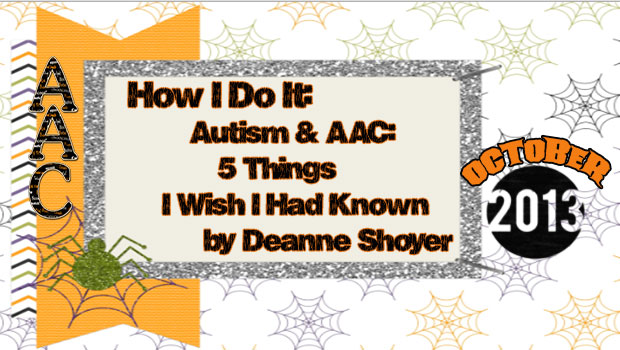
We are so pleased to have connected with Deanne Shoyer from Small But Kinda Mighty and even happier that she is our guest blogger today. Deanne is a mom of twin boys who both are on the autism spectrum. Deanne successfully fundraised to buy iPads for her boys and has been active for more than 3 years in social media and in the special needs app community. She has written about many things but often focuses on implementing AAC in a very PrAACtical way. Please feel free to share this very important post as she highlights AAC, what she has learned, and how it may help others. by Deanne Shoyer at Small But Kinda Mighty (original post at Small But Kinda Mighty) In the title of this post I’ve linked autism and AAC for a specific reason. A lot of the points here are equally applicable to people who have a... [Read More...]
October 26, 2013
by Robin Parker -
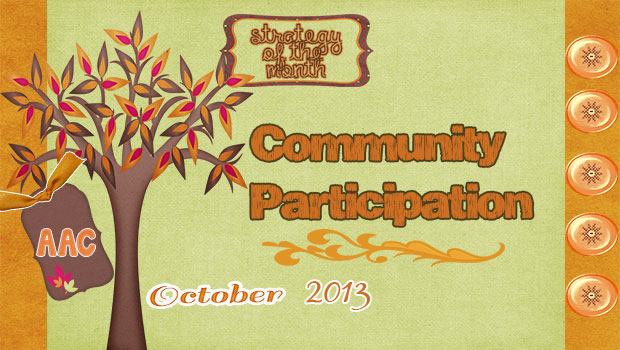
Community participation and communication for AAC users is an integral part of of developing, growing up, and having inclusive opportunities. We often relate community participation to quality of life indicators. Community participation for AAC users begins from the… beginning. Young children can order in restaurants, use picture menus, and have access to many inclusive events. As children grow into adolescents and adults, community participation involves post secondary options, employment, and community living. Perspectives from AAC Users Have communication displays and devices available at ALL times– You need access to a communication system(s) to participate in all situations. Remember to take AAC with you. The sooner the AAC user becomes responsible for taking or telling someone to take the device/displays with them the easier it becomes. For mobile technology systems, there are rugged cases that withstand wind, water, even medical waste (see Lauren Enders Pinterest boards for case and accessory options).... [Read More...]
October 15, 2013
by Robin Parker -
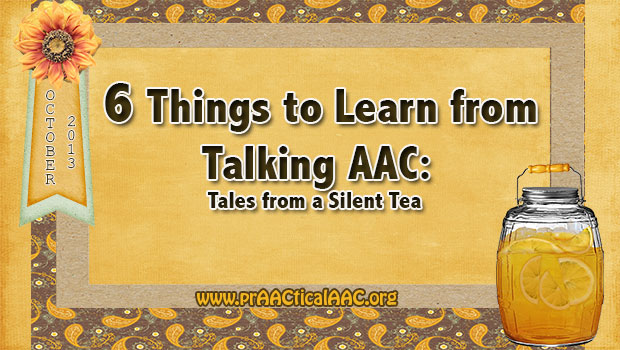
We participated in a silent tea. We used no tech, low tech, and high-tech AAC. For 1 hour. With a group of graduate students, families, and clients. We only communicated with AAC, no natural speech. It was enlightening to say the least. We have done silent teas before, but not recently and as it turns out, a lot was forgotten. Lessons Learned: Communication Takes Longer. Communication takes much longer when using a speech generating device. This is true even when you know the message you are trying to compose, even when you know where the symbols or words are located. We are pretty good at using pause time and waiting expectantly but realized we need to probably wait even longer for messages to be composed. As long as the interaction is continuing, waiting 45 seconds is not too long and if you see someone in... [Read More...]
September 28, 2013
by Robin Parker -
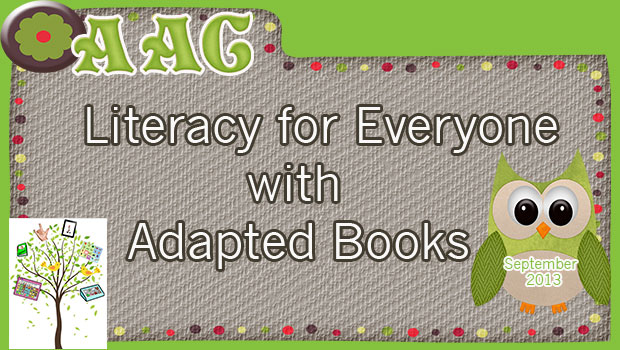
To integrate reading and writing into communication & language learning we need to have lots of books that are easily accessible. Books should be accessible physically as well as through content and interest. This holds true for ALL learners even those that don’t like books but do like…… wheels. We have made literacy accessible for a young girl who only liked elevators, and a boy who only liked balls, and a young adult who liked Barney books but not much else. It holds true for ALL disabilities, and ALL levels of reading and writing. For our final September Literacy Strategy of the Month, we wanted to share the abundance of resources for making adapted books. Because when we have great adapted books, literacy is more accessible. Check out these awesome resources for making your own adapted books and for printing out already created adapted books and lessons. We love early... [Read More...]
September 14, 2013
by Robin Parker -
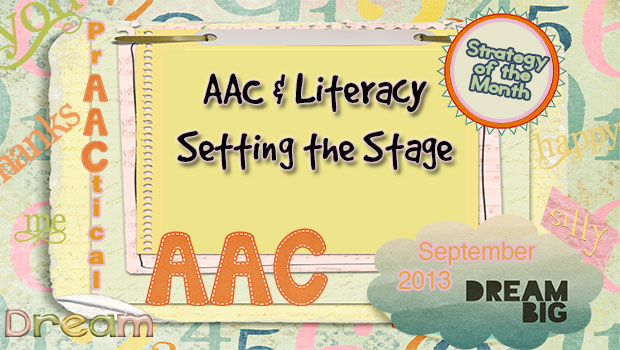
Literacy is for all students. As with most things we learn, emergent readers and writers need to be active participants with print across multiple settings and in multiple meaningful experiences. Emergent readers need to be taught to integrate reading and writing with communication and language. To facilitate this comprehensive integration and understanding, SLP’s and educators can use a variety of authentic research based strategies to help. Create a literacy enriched environment- Literacy skills are promoted through an environment with lots of reading and writing materials. Text based labels and signs will help bring meaning to text in authentic experiences. As you plan activities, include options for writing time/centers, and reading time/centers. Have books accessible to learners. Have lots of book options, but also help students independently turn pages (make it easy with page fluffers), reach books, use writing materials, etc. During interactive activities, give learners a choice of 2 or more books to... [Read More...]
September 4, 2013
by Robin Parker -
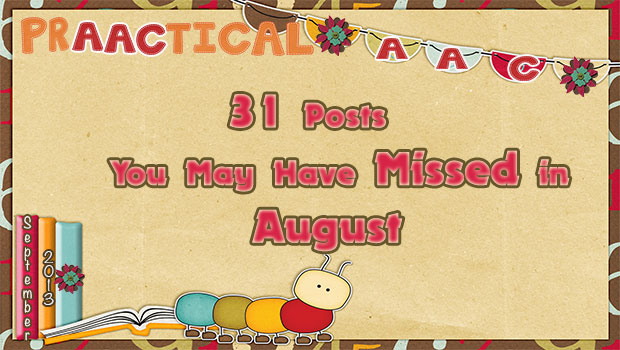
Strategy of the Month Back to School with AAC AAC ‘Must Haves’ for the Classroom & Speech Room PrAACtical Partnerships: AAC & Academics AAC Around the School and Beyond Core Words & the Curriculum PrAACtical Thinking 5 Things to Remember About AAC Technology Fun Friday Commenting to the Max 31 Posts You May Have Missed in July Keep Calm & …………. Great Music Apps & AAC Language Goals 5 Free Resources for Making Communication Boards & Visual Supports 5 Reasons to Say Yes to ‘NO’ Magic Moments with Tellagami Watch It Wednesday: AAC Core Word Vocabulary teaching by Gail Tatenhove & Robin 5 Ways to Use Sequenced Message SGDS and APPS 7 Writing Apps & Activities for ALL Writers PrAACtical Uses of QR Codes Watch This: Example of Teaching Expressive Language with the iPad & AAC Device by the Awesome AAC Chicks 5 Things to Consider About Data Collection in... [Read More...]
August 29, 2013
by Carole Zangari -
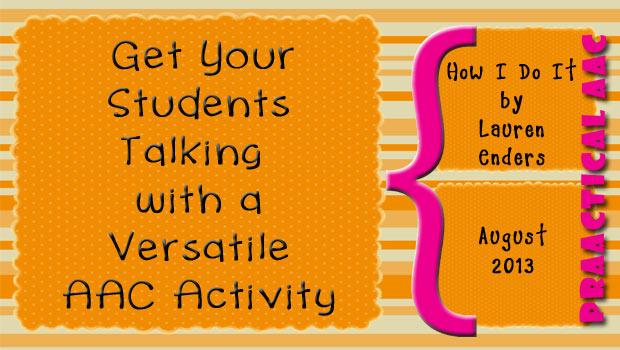
We are so excited to start off the new school year with a wonderfully prAACtical post by Lauren Enders. Lauren’s “How I Do It” posts have been very popular and this one is no different. Today, she shares ways to incorporate key AAC principles in engaging intervention activities and models that with high school students. :::::::::::::::::::::::::::::::::::::::::::::::::::::::::::::::::::::::::::::::::::::::::::::::::::::::::::::::::::::::::::::::::: LEARNING TARGETS (Samples: can be changed to meet student goals) Using core vocabulary, the student will: control the actions of others (beginning with core words like “more”, “stop”, “go”, “again”, and “different”) express his or her opinions through commenting (beginning with core words such as “like”, “don’t like”, “good”, “bad”, and “silly”) TARGET POPULATION: all ages (I have used variations of this activity successfully with students from age 3 through age 21.) TYPE OF AAC: ALL types!! What’s crucial here is the availability of core vocabulary, not the system used. Systems used can vary from... [Read More...]
August 24, 2013
by Robin Parker -
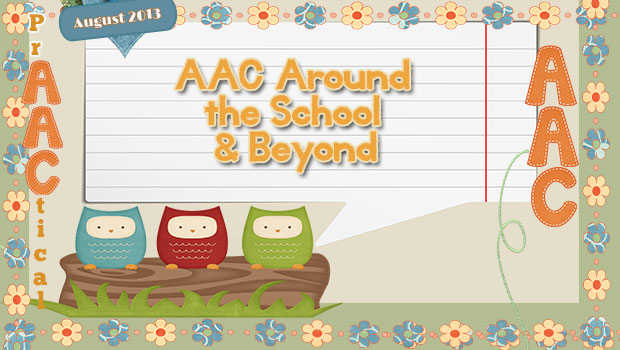
For the August Strategy of the Month, we have been thinking, writing, & talking about AAC in School. School is where AAC learners spend a large portion of their days. There needs to be multiple opportunities for students to USE and LEARN AAC each day. More than that though, we strive for full participation and interaction for students who use AAC. Students should not have to prove that they can do these things before they have ACCESS to AAC strategies and intervention. Here are some things that can be done to help build AAC participation for both students and educators. Provide ACCESS to AAC devices and visual supports throughout ALL activities in ALL places in school and on school sponsored trips/community based instruction. Provide Aided Language Input when teaching AAC to students. Use a Core Word approach when teaching AAC to students but don’t forget about Fringe Vocabulary. Learn and use partner assisted communication... [Read More...]
August 10, 2013
by Robin Parker -
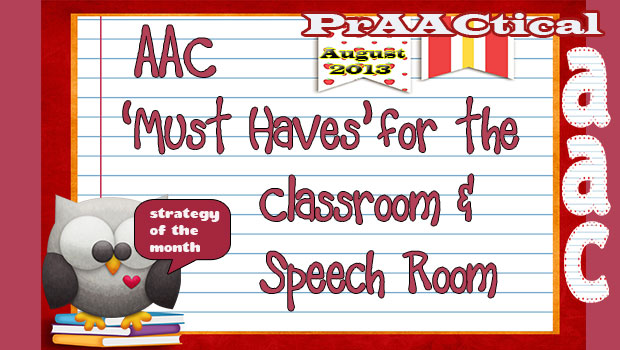
As we were getting ready for back to school and thinking about ‘must haves’, it quickly became apparent that it is not so easy to narrow it down. And the ‘must haves’ would definitely vary depending upon type of class, students, and even school. Based on a wide variety of differences, we organized a wide variety of choices to explore (we apologize in advance if we got carried away but…). Choose what you need, bookmark what you may need later and let us know your ‘must haves’ for a classroom and speech room AAC collaborative approach. We will create an ongoing list. Get Started Before School Starts Do these 10 Things to Get Started with AAC if you are new to an AAC student or classroom Provide AAC Support in the Classroom. Support teachers and educators with tips from Jane Farrall, & learn about AAC in the Classroom by Joan... [Read More...]
July 22, 2013
by Robin Parker -
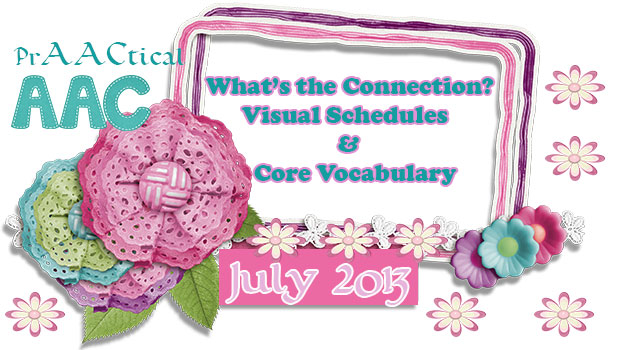
Because it seems there has been a lot of emphasis on core words and visual schedules over the past couple of months, we wanted to highlight a particular resource titled: Visual Schedules to Expose & Reinforce Core Vocabulary by (the great) Gail Van Tatenhove. This resource can be found on the Minspeak website which shares excellent (& free) comprehensive AAC information for everyone. You can search by categories and get fact sheets, communication boards, curriculum supports and more. AAC users, families, & caregivers Teachers and therapists Academicians & students Teaching Plans & Materials Pixon Project Resources Try out some of the ideas from the Visual Schedule/Core Word Resource or something else and let us know what you think.









